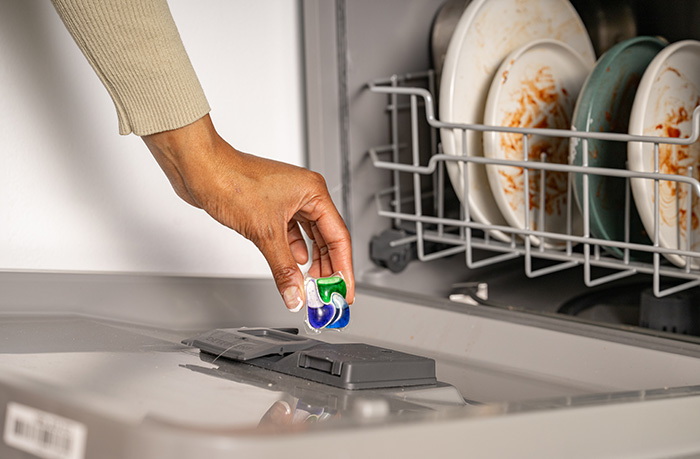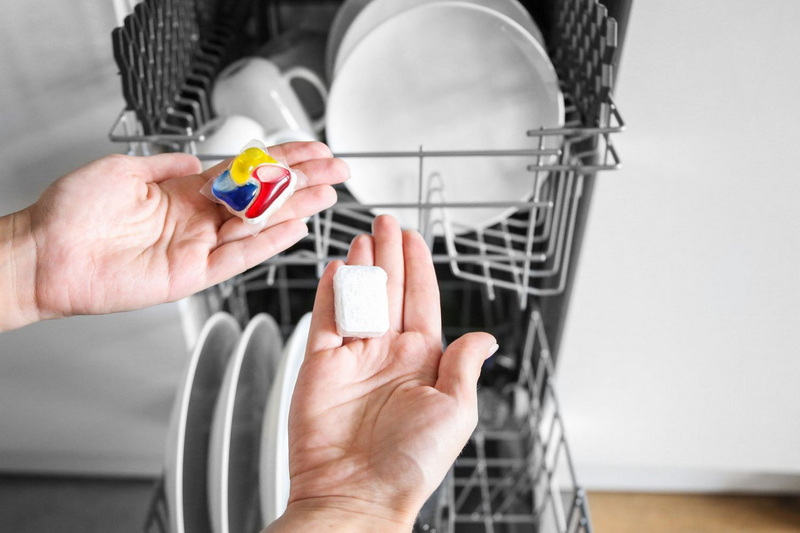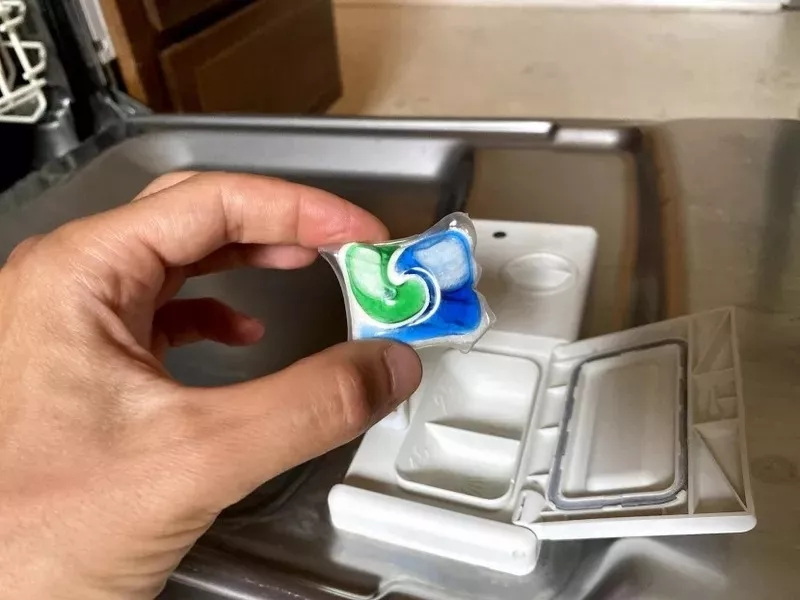Dongguan UFine Daily Chemical Co.,Ltd.
- All
- Product Name
- Product Keyword
- Product Model
- Product Summary
- Product Description
- Multi Field Search
Views: 222 Author: Tomorrow Publish Time: 10-30-2025 Origin: Site











Content Menu
● What is a septic tank system?
● Key considerations for septic tanks
● What to monitor in septic systems
● Alternative approaches and considerations
● FAQ
>> 1 Do dishwasher pods harm septic tanks?
>> 2 Should I avoid phosphates in dishwasher pods for septic systems?
>> 3 Are liquid detergents better for septic systems than pods?
>> 4 How often should I pump my septic tank if I use dishwasher pods regularly?
>> 5 What signs indicate my septic system might be affected by dishwasher detergents?
Dishwasher pods are a popular choice for many households due to their convenience, measured dosing, and often powerful cleaning agents. However, households relying on septic systems may worry about whether these pods affect septic tank health and function. This article examines the chemistry of dishwasher pods, how septic systems work, the potential risks and mitigations, and evidence-based guidance for septic-conscious households.

A septic system typically consists of a septic tank and an absorption field. Wastewater from the home flows into the tank, where solids settle to the bottom, and oil and grease float to the top. Bacteria in the tank begin to break down organic matter. The clarified liquid then exits to the drain field for further treatment. Proper maintenance, including regular pumping and avoiding harmful chemicals, keeps the system functioning.
Dishwasher pods are pre-measured packets containing detergents, additives, enzymes, and sometimes rinse aids. They are designed for convenience and to deliver a consistent cleaning dose. The ingredients vary by brand but commonly include surfactants, builders, bleaching agents, enzymes, and fragrance or dye components. Pods are designed to dissolve fully in water during the wash cycle.
- Chemical load: Septic systems are sensitive to harsh chemicals and non-biodegradable substances. Strong solvents, bleach, and certain additives can alter the microbial balance in the tank and the soil.
- Biochemical oxygen demand: The wastewater entering the septic system carries organic matter that naturally decomposes with bacterial help. Substances that are highly concentrated or slow to degrade may disrupt this process.
- Dosage accuracy: Pre-measured pods help avoid overuse, which can be beneficial. However, the cumulative effect of repeated use and certain ingredients should still be considered.
- Enzymes and surfactants: Some enzymes can aid cleaning but may affect microbial populations in the tank. Surfactants vary in degradability; nonionic or biodegradable surfactants are generally more septic-friendly.
- Residuals reaching the drain field: The drain field relies on a balance of moisture and microbial action. Excessive detergents or phosphates (where present can influence soil chemistry and microbial communities.
- Most mainstream dishwasher pods are rated as septic-safe by manufacturers when used as directed. This means the detergents are formulated to break down in septic systems and minimize harmful residue.
- Some pods contain phosphates or high concentrations of bleaching agents in certain formulations. Phosphates, historically used to soften water, have environmental concerns and regulatory scrutiny, but modern septic-safe formulations may minimize or eliminate phosphates.
- The impact on septic systems is influenced by usage patterns, water hardness, tank size, and maintenance practices. A single pod per cycle, as directed, is unlikely to cause significant harm for most households with regular septic maintenance.
- For households with known septic issues (pump frequency, failures, or compromised drain fields, opting for septic-safe products and reducing chemical load is prudent.

- Choose septic-safe products: Look for dishwasher pods labeled as septic-safe or biodegradable. Check for statements from the manufacturer about compatibility with septic systems.
- Avoid mixing chemicals: Do not combine dishwasher pods with other harsh cleaners or solvents in the same wash, which could increase chemical load.
- Moderate enzyme-containing pods: If concerned about microbial balance, you may prefer pods with milder enzyme content or those specifically designed for septic systems.
- Regular maintenance: Maintain the septic system according to professional guidelines, including pumping every 3–5 years for typical households, and more frequently if the system experiences issues.
- Water quality considerations: In hard water areas, consider using a water-softening approach compatible with septic systems, as certain additives can interact with detergents.
- Laundry and dishwasher load balance: Excessive wastewater volume can overwhelm the septic tank and reduce performance.
- Odors or slow drainage: Unusual odors, gurgling sounds, or slow draining can indicate a problem within the septic system or drain field.
- Sludge buildup: Regular pumping is essential to prevent solids from accumulating to a level that undermines system function.
- Backups after heavy use: If wastewater backs up into sinks or toilets after running full loads, professional assessment is warranted.
- Eco-friendly detergents: Some households switch to products marketed as eco-friendly or “green” to minimize chemical exposure in septic systems.
- Liquid detergents vs. pods: Some argue that liquid detergents allow more control over dosing, though pods are designed to be safer and more convenient. Both forms should be chosen with septic compatibility in mind.
- Phosphate-free formulations: Phosphates can contribute to environmental eutrophication; choosing phosphate-free pods aligns with environmental stewardship and may benefit septic systems in some regions.
- Household with high water usage: If a family uses large loads daily, ensure the septic system is adequately sized and maintained, and select products that are readily biodegradable.
- Older septic systems: Communities with aging or stressed septic infrastructure may benefit from using milder, septic-safe detergents and reducing overall chemical load.
- Well-maintained systems: For well-maintained systems, occasional use of standard septic-safe dishwasher pods is unlikely to cause issues, provided proper maintenance is followed.
Dishwasher pods, when used as directed and chosen for septic-safe formulations, are generally compatible with residential septic systems. The key is mindful product selection, adherence to recommended dosing, and regular septic maintenance. For households with known septic vulnerabilities, selecting septic-friendly pods, reducing chemical load, and maintaining a routine pumping schedule enhances system resilience. Ultimately, informed product choices and proactive maintenance provide the best path to keeping both dishes clean and septic systems healthy.

Answer: Most septic-safe dishwasher pods are formulated to minimize harm, especially when used as directed and in moderation.
Answer: Phosphates can pose environmental concerns, but many septic-safe formulations are phosphate-free. Check product labels and regulatory guidelines in your area.
Answer: Both can be compatible if they are septic-safe and used in proper amounts. Pods offer dosing accuracy, while liquids provide flexible dosing.
Answer: Follow professional guidelines for your tank size and usage; typical recommendations range every 3–5 years, but high usage or smaller tanks may require more frequent pumping.
Answer: Slow drainage, gurgling pipes, foul odors, sewage backups, or unusual solids buildup in the tank or drain field warrant inspection.